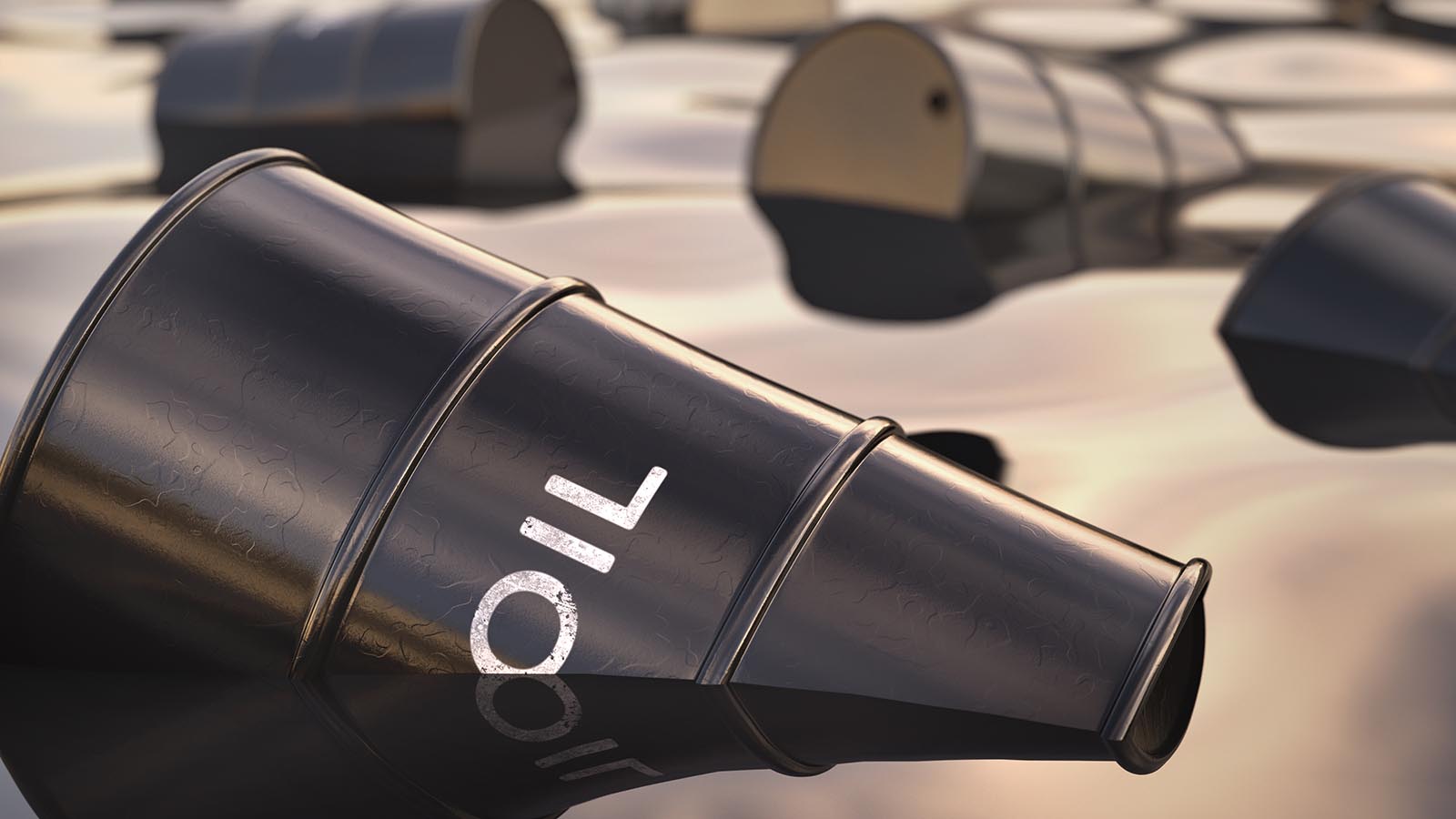In late April, the supply-demand imbalance in the oil market took an almost comical turn. The futures contract for May delivery actually sold at a negative price for the first time in history. Cristian Tiu, chair and associate professor of finance at the University of Buffalo’s School of Management likened what is happening to oil stocks to a clearance sale.
“The negative oil prices reflect that storage capacity is near-max. It’s very much like when you are in a mall shopping (soon, soon…) and they start to sell swimming trunks and put winter boots on sale at the end of the season. But they’re kind of heavy, and your hands are full already, so you say no, thank you. But the store is losing money if they keep the boots on the shelf longer — so they say look, we will give you some store credit too if you just take them. This is boots trading at a negative price.”
While retailers can generally handle a seasonal oversupply, it’s not the same with oil companies. These companies need oil prices to remain at a certain minimal level in order to run a profitable business. And right now, oil prices are not even close to those levels.
Scott Baier, professor and department chair for Clemson University’s John E. Walker Department of Economics, described how a lack of oil storage was the problem.
“In the current environment with people sheltering in place, the demand for oil had dropped dramatically and we are running out of places to store the excess supply. This has been the main driver … and will continue to influence prices until demand picks back up.”
And that means that, in all likelihood, there will not be room left for some oil companies.
Here are four oil stocks that have a strong probability of not surviving even if oil prices continue to rally.
- Whiting Petroleum (NYSE:WLL)
- Chesapeake Energy (NYSE:CHK)
- Oasis Petroleum (NASDAQ:OAS)
- Occidental Petroleum (NYSE:OXY)
Oil Stocks to Sell: Whiting Petroleum (WLL)

In the last 12 months, WLL stock is down 96%. Other oil stocks are down an average of 49.4%. So when oil prices began to crash in late March, Whiting was one of the first companies to file for bankruptcy.
Whiting was considered a shining star of the shale industry. The company owned properties in North Dakota’s Bakken oilfield.
The company will be attempting to make the best use of the $660 million in cash that is has on its balance sheet. But even under terms of the bankruptcy, Whiting has a runway of less than one year based on free cash flow.
Whiting is not profitable now and was not forecast to be profitable in the next three years under “normal” conditions. With oil prices likely to be significantly below profitable levels for the remainder of 2020, it is likely that Whiting will continue to post lower and lower revenues. And that will affect the company’s already high 69.6% debt-equity ratio.
Chesapeake Energy (CHK)

It’s never a good sign when your company’s stock is dropping while the index for your sector is rising. But that’s the case that Chesapeake Energy finds itself in. On May 11, Chesapeake reiterated what many investors were already concerned about. The beleaguered energy company reissued a “going concern” warning to investors in its quarterly financial filing.
CHK stock dropped 16% in early morning trading that continues to put the stock in a death spiral. Chesapeake has now dropped over 93% in 2020 and has dropped over 68% in the last month. This is happening at the same time that crude oil futures are rising, albeit off spectacularly low levels.
Like Whiting, one of the core issues for Chesapeake is the cost of servicing its debt which only continues to grow. The company executed a reverse stock split on April 14. Chesapeake also tapped into its $3 billion credit facility along with a plan to sell off assets.
While all of these moves are necessary, they still may not be enough. At the end of 2019, Chesapeake was carrying $8.9 billion of outstanding debt versus $8.6 billion in total revenue. Over the next five years, the company has to retire $4.9 billion of debt plus interest. That’s hard math to overlook.
Oasis Petroleum (OAS)

When the oil sector is in a bull market, it can make a lot of speculative companies look less bad. They’re not profitable, but they show promise. That’s the case with Oasis Petroleum. OAS stock has underperformed the sector.
The stock is down over 90% in the last 12 months. On average, other oil stocks are down just under 50%. The stock is trading below $1 per share and is asking shareholders to approve a reverse stock split to prevent it from becoming delisted.
The metrics are all working against OAS stock. The company currently sports a return on total capital of 2.86 and a return on invested capital of -2. The company also has a poor return-on-equity ratio of -2.4% and a return-on-assets ratio of 0.6%.
All of these metrics paint the picture of a company that has done a poor job of managing its assets. It also suggests that Oasis will be unlikely to provide a positive return for shareholders.
At the moment, Oasis has a debt load that is covered by its operating cash flow. However, its debt-equity ratio is still uncomfortably high at 70.7%.
Occidental Petroleum (OXY)

OXY stock is down over 70% in the last 12 months. And while the majority of this slide has occurred in 2020, the stock has been on a steady decline for several years.
Occidental Petroleum made a big bet on buying Anadarko Petroleum. Analysts largely criticized the move and suggested that Occidental paid too much. This was particularly true since the company got into a bidding war that resulted in the company selling $10 billion of preferred stock to Warren Buffett.
To say the least, everything needed to go perfectly. And it didn’t. Since oil prices crashed, Occidental has taken steps to shore up its balance sheet. The company cut its quarterly dividend over 80% and announced it was cutting capital spending by 32%.
Occidental CEO Vicki Hollub was optimistic that if U.S. oil prices could remain in the low-$30 range, the company could break even. That may be the reason that OXY stock is trying to rally as oil prices climb back into the mid-$20 range. However, with a heavy reliance on shale, it’s hard to see Occidental generating the kind of revenue that it will need to satisfy investors.
Chris Markoch is a freelance financial copywriter who has been covering the market for over five years. He has been writing for InvestorPlace since 2019. As of this writing, Chris Markoch did not hold a position in any of the aforementioned securities.
